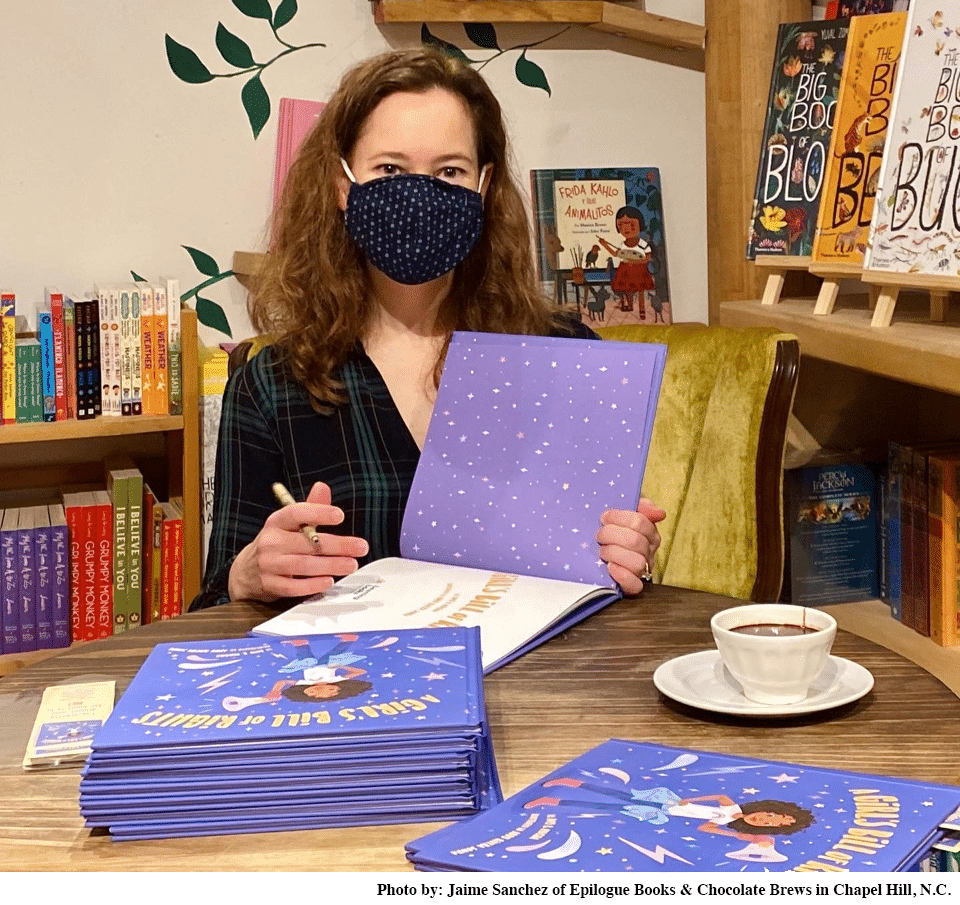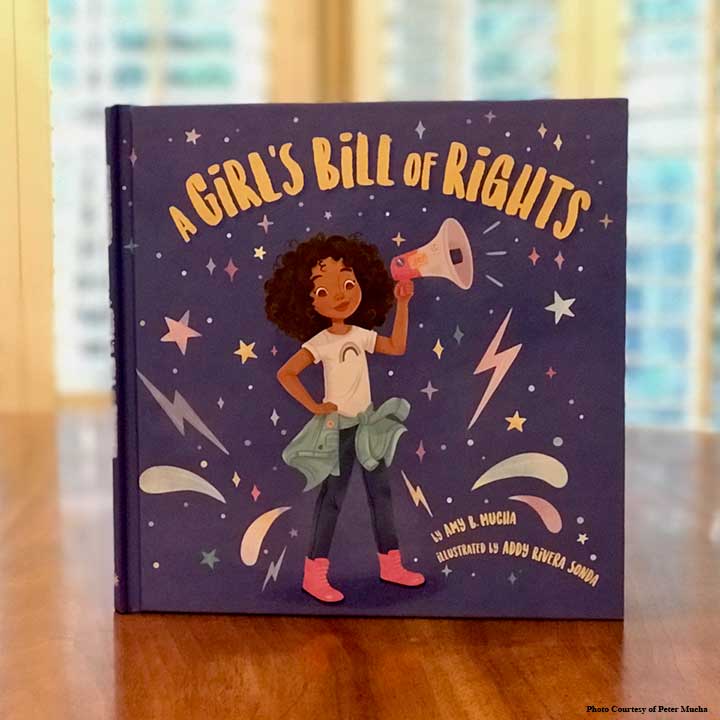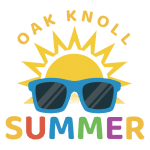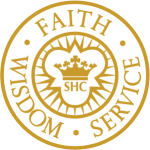Q&A with Oak Knoll Alum Author Amy B. Mucha ’90
 Amy (Burnham) Mucha ’90 authored a children’s book that was published by Beaming Books on February 2, 2021. After Oak Knoll, she went on to Kenyon College, where she graduated Phi Beta Kappa with a degree in English Literature. Oak Knoll recently caught up with Mucha to discuss her new book, her love of writing and how OKS prepared her for the future.
Amy (Burnham) Mucha ’90 authored a children’s book that was published by Beaming Books on February 2, 2021. After Oak Knoll, she went on to Kenyon College, where she graduated Phi Beta Kappa with a degree in English Literature. Oak Knoll recently caught up with Mucha to discuss her new book, her love of writing and how OKS prepared her for the future.
Q: How did you first come up with the book idea for, “A Girl’s Bill of Rights”? What is the theme of the book and for which grades is it recommended?
A: I always feel a bit sheepish admitting this, but I wrote “A Girl’s Bill of Rights” entirely for myself. Even having had the benefit of an all-girls’ education, as an adult I still found myself too often trying to please others instead of standing up for what I believe in. Finally, one day I realized I’d had enough! I sat down and wrote a list of “rights” which turned into a kind of assertiveness pledge. It didn’t occur to me until years later that my pledge could be modified into a girl power picture book. So, while the book is currently being marketed to girls ages 4-8, in truth it was created for “girls” of all ages!
Q: Why is “A Girl’s Bill of Rights” popular now and why do you think it resonates now more than ever in our day and age?
A: Women’s rights have come a long way in the last hundred years, but we still have a long way to go. Often, without meaning to, we send the message to girls that their most important job is pleasing others. Even girls who start out strong and assertive can turn into middle schoolers who find it hard to speak their minds. My hope is that by reading A Girl’s Bill of Rights when they are still young, it will help bolster them against the challenges they’ll face as they get older. I think it can also serve as a reminder to the mothers, grandmothers, and teachers who read it to them, as well. I’ve heard from several grown women since it was published, that “The one who needed to read this was me!”
Q: What did it feel like when you first saw your book in a bookstore? What was your first thought?
A: It was very much a dream come true and felt exactly as amazing as you might imagine! My first thought (once I got past my initial, speechless excitement) was to think how very lucky I am to have been matched with such a perfect illustrator. Addy Rivera Sonda played just as big a role as I did in making this book what it is, and I will always be grateful to my publisher for choosing her!
Q: Did you always know you wanted to be an author?
A: Only since I was 5. Ha! But for real, I could barely hold a pencil when I read that the youngest published author was 6. My immediate thought was, “I can beat him!” Alas, it would be many decades before my ambitions were realized. Thankfully, it was worth the wait.
Q: What exactly helped shape your interest in writing?
A: I’ll never forget the day my wonderful second grade teacher read us “The Velveteen Rabbit.” The book made her cry, right there in front of us! I remember watching her blow her nose and wipe tears off her cheeks and I thought, “Now that. That is power.” Writing seemed to me like a kind of magic, and in truth it still feels that way to me now.
Q: How did the COVID-19 pandemic impact the books release/your book signings?
A: My book was originally due in September but was delayed five months because of the pandemic. Then, of course, my launch ended up being virtual, with no in-person talks or school visits. Probably the hardest part, though, is knowing so many people won’t get to see it in a bookshop, since so many are unable to go to bookstores these days. I think all authors launching now are a bit worried about how this will affect sales. I’m just beginning now to do some virtual school visits, where I speak to younger kids about the Power of a Pledge and to other kids about the path to publishing.
Q: How do your book ideas come to you?
A: It’s different for every book, honestly. Sometimes an idea will come out of a strong conviction, like “A Girl’s Bill of Rights.” Other times something will pop into my head from nowhere, and I’ll think, “Where the heck did that come from?” Then there’s those wake-up-with-a-story moments, which are always much nicer when they happen in the morning rather than at 2 a.m.! Finally, there are the stories that are forced out of necessity, generally because of a deadline. Strangely, there seems to be no correlation between the quality of the idea and the way it comes to me. Sometimes the ideas that strike with excitement turn out to be duds, and the ones forced by necessity can be real winners.

Q: What would you say to anyone reading this in our Oak Knoll community who may aspire to be an author – what advice would you offer them?
A: I have no doubts that there are oodles of talented writers in the OKS community, and my advice if you want to be traditionally published (rather than self-published) is to take your time and do plenty of research. Do NOT simply write a book and start immediately sending it to publishers. Even after getting critique and feedback on the work itself, you’ll want to spend time learning industry standards and proper protocol. For example, picture books have become shorter and shorter in recent years. It’s rare these days for publishers to accept a manuscript longer than 500 words. You’ll want to query agents first, and query letters follow set patterns. It’s an awful thing to see a talented writer miss their chance because they didn’t take these basic steps, but it happens all the time.
Q: How many books have you written?
A: I’ve written over 20 picture books (probably over 100 if you count the duds) and I’m working on my fourth novel. I wrote them over many years but only began reaching out to agents and publishers two years ago.
Q: What has been your favorite book you wrote and why?
A: Well, now “A Girl’s Bill of Rights” is my favorite! But if we don’t count that, my favorite is a novel I wrote with my then-11-year-old daughter. She’s amazingly creative in her own right and helped me in the brainstorming stages, then remained my consultant through the entire book. I have every finger crossed that a publisher will decide to pick it up!
Q: Where did you go to college after OKS and what was your major?
A: I was an English Major at Kenyon College, which I highly recommend to any student who dreams of being a writer.
Q: How did OKS prepare you for life in college and beyond?
A: I feel so lucky and proud to be an Oak Knoll graduate! Anyone from my era will remember the names Joan Turk, Joan Brennan, Sister Marlene, Pat Mahoney, and Harriet Marcus, and know how lucky we were to be guided and taught by such amazing people. And that’s to say nothing of my classmates! I like to joke that Oak Knoll helped me best by kicking my butt, but it’s 100 percent the truth. I was in awe of my fiercely intelligent and talented classmates. And while I had days where I felt like it took everything I had just to keep up with the pack, it paid off in spades. I started freshman year of college miles ahead of my peers in terms of writing and analytical abilities. So, while Oak Knoll may have kicked my butt, it never asked from me more than I could give, and I came out a better student, better learner, and more capable person because of it.
Q: How did OKS foster your love of writing?
A: I owe my continued love of literature and writing specifically to Pat Mahoney and Harriet Marcus (both Oak Knoll English teachers). I was far from the most talented writer in my class, but they saw that I had a spark for it and encouraged me to keep at it even when I was sure I’d never be good enough. It can be tough at a competitive high school, comparing yourself to schoolmates who will go on to be Ivy League professors, New York Times journalists, and Olympians. But these wonderful teachers made me believe I could do it, even when I didn’t believe in myself.






